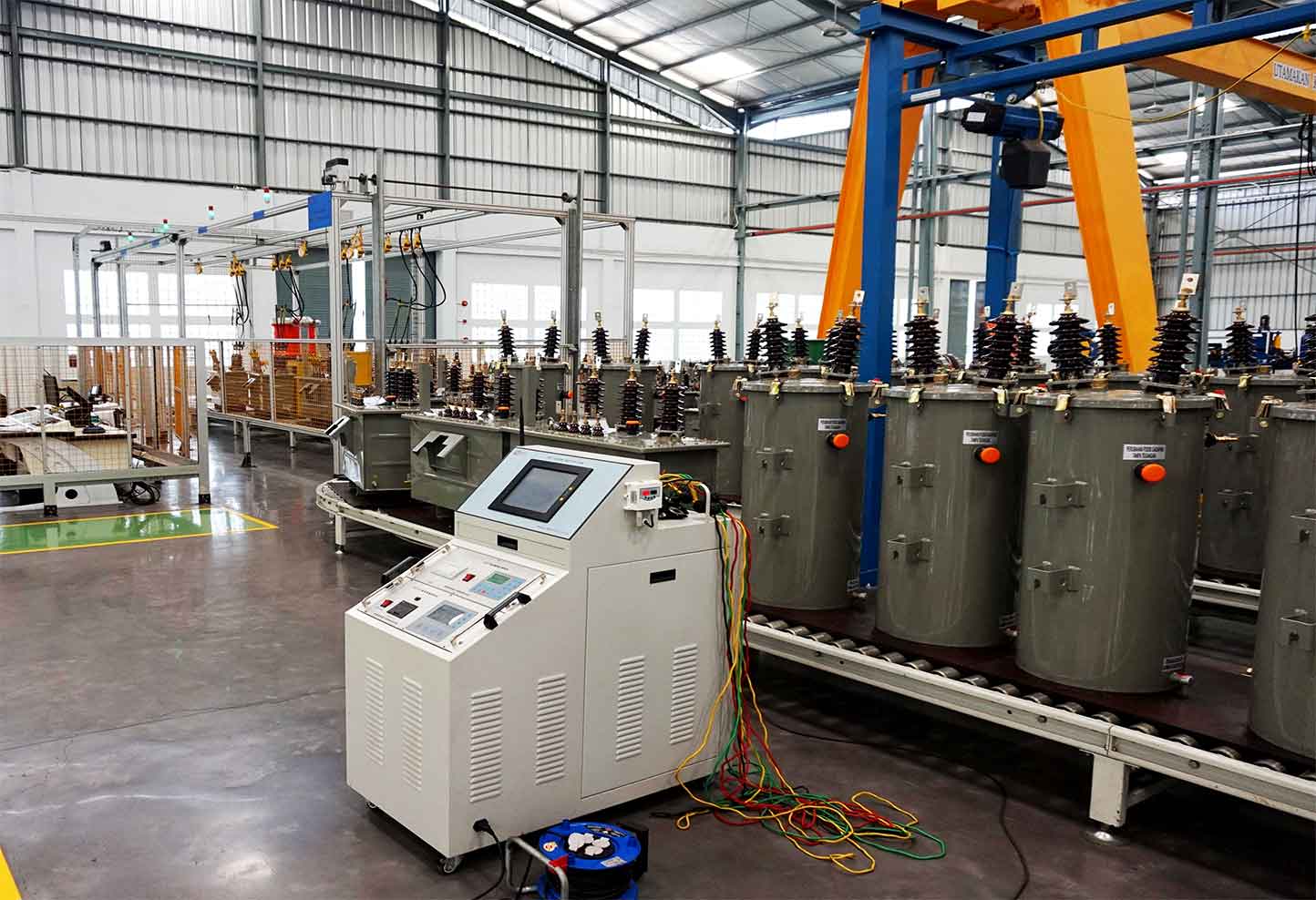1. Transformation ratio test
The transformer ratio test ensures that the transformer winding has the appropriate number of turns to generate the required voltage. This ratio is a measure of the voltage applied to the primary terminal and the voltage measured at the secondary terminal.
2. Winding resistance test
Winding resistance test, also known as DC resistance test, can ensure correct connection and no abnormalities, such as loose connections or high contact resistance of tap changer.
3. Short circuit impedance test
This test is performed to ensure that the indicated nameplate impedance matches the measured transformer impedance.
4. On load tap changer test
The contact of the tap changer is subjected to electrical continuity testing during the tap change period. By applying a constant current during tap changing, the tester searches for open circuit transients during tap changing. If bounce or high resistance contacts are not detected, it can lead to arcing and possible tap changer or transformer faults.
5. No load test
This test verifies the design and core performance by indicating the no-load current drawn by the transformer. Magnetizing current is a factor that affects losses in circuits, magnetic circuits, and dielectric circuits. A high-power voltage source is required to excite the HV winding of the transformer with impedance voltage, while the LV remains open circuit
6. Dielectric loss test
Dielectric loss is a measure of the dielectric loss of a dielectric when subjected to an AC electric field. The AC field is the result of applying voltage between the conductor and the external capacitor foil in the case of a bushing or CT, and for transformers between the conductor and the oil tank or iron core or other windings, it is the result of voltage. The results recorded on site should be compared with the nameplate or factory records.
7. Sweep frequency response analysis
Sweep response testing is a special test that is sometimes performed as part of debugging testing during preventive maintenance and after a fault trip. Scanning frequency response evaluation of the mechanical condition of transformers is one of several methods used to detect mechanical faults. Test the transformer before leaving the factory, and conduct similar tests during the final installation and on-site debugging of the transformer. Then compare the reference fingerprints obtained before the transformer leaves the factory with the fingerprints obtained during debugging.

Kvtester Electronics Technology Co.,Ltd. is a high-tech enterprise specializing in power testing, testing, research and development, production, and sales of testing equipment. It has been engaged in the electrical testing industry for many years, and its products are of high quality. We welcome customers to come and purchase.





